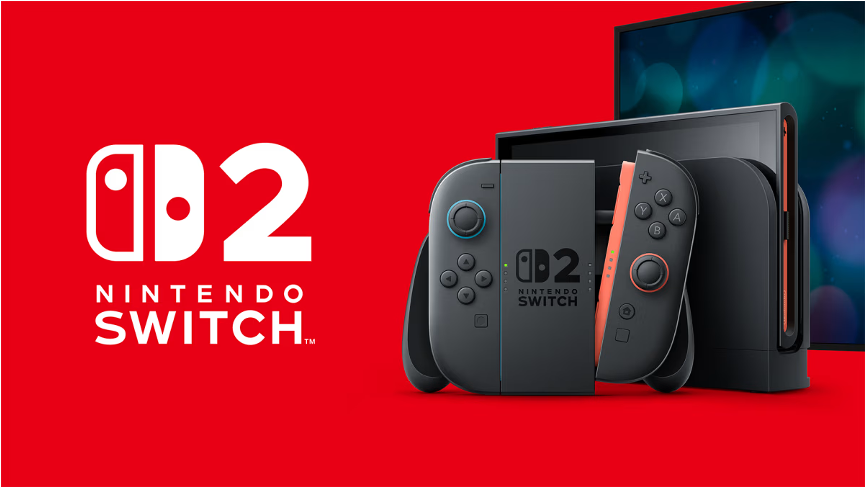Samsung has reportedly secured a key contract to manufacture the custom processors for Nintendo’s upcoming Switch 2 console, marking a strategic shift from Nintendo’s prior reliance on TSMC. The Nvidia-designed Arm-based Tegra T239 SoC may align better with Samsung’s production capabilities. Anticipated demand is high, with projections of up to 20 million units by March 2026. Despite earlier preorder delays due to US tariffs, the official launch remains set for June 5, 2025, with strong initial sales expected.
It looks like Samsung snagged a significant win for their chip-making biz. They’ve reportedly landed a contract to build the custom processors for Nintendo’s new gaming console, Nintendo Switch 2.

This info comes from a report over at Bloomberg, and they mentioned that this processor deal is a nice boost for Samsung as they compete with TSMC in the world of chip foundries. This news also seems to back up some earlier whispers suggesting Samsung might be involved with the Switch 2’s processor. It’s a bit of a change-up for Nintendo, which used TSMC for the original Switch and its updated versions.
Nvidia, of course, is the brains behind the custom processor for the Switch 2. Those folks, who are great at graphics, rely on foundries to actually make the chips they design. It wouldn’t be too surprising if Nintendo considered TSMC, but there are a couple of reasons that probably played a part in Nintendo’s decision. For one thing, TSMC is a leading foundry right now, having become quite prominent after helping the rapid growth of AI. As someone pointed out to Bloomberg, Nintendo might be avoiding potential availability issues and maybe higher prices at TSMC by teaming up with Samsung.
Another source from Bloomberg mentioned that the custom Nvidia chipset, which seems to be an Arm-based Tegra T239 SoC, might be a better fit for Samsung’s production equipment. If that’s the case, it could mean Nintendo has been leaning toward Samsung for a while now. As has been mentioned in other places, it seems one of the few sample Nintendo Switch 2 consoles out there has a Tegra T239 SoC from way back in 2021.
Anyway, it looks like Samsung is geared up to produce as many as 20 million Switch 2 units by March of 2026, if needed. That’s quite a bit more than Nintendo’s projection of around 15 million. Demand seems pretty high—Nintendo Japan is rumored to have received 2.2 million preorder applications, for example. But the US tariffs have already had an impact on sales in the US. Nintendo initially paused preorders for the Switch 2 in early April while they figured out “the potential impact of tariffs and evolving market conditions.” Luckily, retail preorders started up again later in the month.

Good news is, Nintendo hasn’t changed the June 5, 2025, launch date for the Switch 2 to officially go on sale. According to TechRadar, retailers like Best Buy and GameStop will probably have some Switch 2 consoles in stock on launch day, but expect some busy stores and potential sellouts. Let’s hope Nintendo’s other suppliers are as ready as Samsung seems to be for all that demand. The original Switch has been around for a good eight years now. We don’t know for sure if the Switch 2 will be a hit with everyone, but we have a feeling its initial sales will be pretty strong.
Switch has been the outstanding best-selling console, beating Microsoft and Sony combined in unit sales. The library of games from Nintendo and others continues to grow, attracting more players. The Switch 2 is a better physical design and will dive a 4K TV—a lot to like from a not-too-expensive and portable device.
LIKE WHAT YOU’RE READING? INTRODUCE US TO YOUR FRIENDS AND COLLEAGUES.
Epilogue
If you want to buy a Switch 2, you probably should go to Japan. The folks over at TradingPedia, published a list of Nintendo Switch 2 prices from various countries that is reproduced below.
Here are some key takeaways from their report:
• Switzerland is the most affordable country for buying the Nintendo Switch 2. It takes only 13 hours of work (less than two full days) to afford the console. With a median monthly salary of $7,369.15 and console price of $571.83, the gadget accounts for only 7.7% of your monthly spending.
• In Luxembourg, it takes just 14 hours of work to afford the console, while in Singapore and the United States, it takes 17 and 18 hours, respectively.
• At a price of $449.51, the Nintendo Switch 2 in the Philippines is among the cheapest. However, the average monthly salary of $400.37 means that it would take 194 working hours, or 24 days, to afford the newest console there.
• Countries with a lower average income tend to face higher effective costs. In North Macedonia, where the average monthly net salary is just $400.37, the Nintendo would cost you 142 hours. In Albania and Serbia, one needs to work 132 hours to afford the Nintendo Switch 2, while in Bulgaria and Romania, the console is only slightly more affordable, requiring 101 and 99 hours of labor, respectively.
• When looking solely at price, the most expensive Nintendo Switch 2 is in Sweden ($704.59), while the cheapest is in Japan, where the console originates from ($347.42).
More detailed information about the most and least affordable countries for Nintendo Switch 2 is available in the full report. It also includes the full methodology behind these findings. The raw data can also be found on Google Drive via this link.